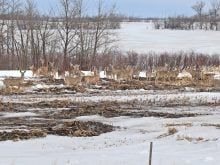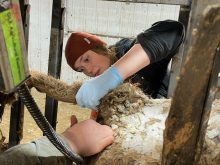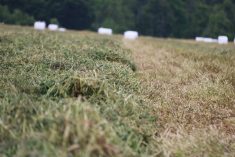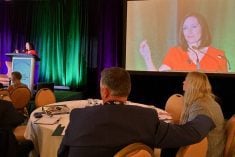Not all farmers own enough land to graze their cattle, which leads to the need to rent pasture. But as land availability shrinks and rental costs rise, some farmers are seeking other options. These could come in the form of drylots.
At the University of Illinois, new research by animal scientists has evaluated the approach of raising cattle in drylot conditions during what would normally be the traditional grazing season.
“Here in the upper Midwest, there is limited pasture,” said Daniel Shike, associate professor with the Animal Sciences Laboratory. “More land is being converted to cash crops, development and urban sprawl is also happening. Cattle producers are looking for alternatives. The dairy industry looked at this a while ago and they were able to shift to a more intensified system. Other producers are certainly interested in trying (drylot management).”
Read Also

Feds propose overhaul of chronic wasting disease control program
Chronic Wasting disease control program getting updated by Canadian Food Inspection Agency with feedback encouraged from producers.
The research team compared Angus-Simmental cross cow-calf pairs on pasture and in drylots over a two-year period. They looked at growth, performance, lactation, locomotion and calf behaviour at weaning and during the feedlot receiving period.
The study showed that cow-calf management in a drylot scenario throughout the summer grazing period could be done with few negative consequences.
A total of 216 cows and their offspring were evaluated at the Orr Agricultural Research and Demonstration Center in Baylis, Illinois, from May to August. Before that, they would have been traditionally managed on pasture from May to December then housed on drylots from December to May.
“For each of the study years, we had cow-calf pairs inside and outside of the study area with 108 pairs each year, 54 pairs on pasture and 54 pairs on drylots,” said Shike.
“Cows in drylots were maintained in a 21.9 by 11 metre concrete lot that allowed 13.4 sq. metres per cow with a 14.6 x 7.3 metre shed. Their calves had access to an adjacent pen 11 x 11 metres with a 7.3 x 7.3 metre open-front shed. The area under cover was bedded with ground stalks and wheat straw.
“In the pasture, the cows were rotationally grazed, and the pasture was stocked at four pairs per hectare. We rotated those pastures every three to four weeks, depending on availability.”
Drylot cows were limit-fed a total mixed ration maintenance diet while the calves had free access to the same diet in the adjacent creep pen. In the pasture, the cows grazed available forage with calves nursing and eating a processed creep feed three weeks before weaning.
Between the two maintenance strategies, the research team had their expectations confirmed that the cows and calves in the drylot environment would do as well or better than those on pasture and credited this to the young being on a controlled diet in a controlled environment. When it came time to wean and ship calves to the feedlot, pasture-raised calves were significantly smaller than their drylot counterparts.
“In the pasture, the environment was dictated by weather and forage availability,” said Shike. “Some years could be very similar while other years they could do better depending on forage. We had good weather the two years we did this study, but we had dry stretches when the forage declined a bit. We did see those cows on pasture lose a little bit of weight, but they were still acceptable. It didn’t impact condition or reproduction, but they have to cope with rain, cold, or heat stress.”
In the drylot scenario, some lameness issues were detected and they were monitored and treated.
“We had a few cases of foot rot and a few cases of digital dermatitis,” he said. “We did locomotion scoring that could detect issues with lameness and with feet. The cows tended to be a bit more susceptible in a drylot when it got wet. I think that’s an area that needs further work to assess what is the best way to bed the cows and what is the best stocking range. Some dairy farmers run their cows through a foot bath to help control digital dermatitis. That may not be feasible for beef operations, but this could be due to stiffness being on concrete.”
An immediate issue when considering drylot management is feed cost. The researchers debated whether to include an economic analysis but chose not to because that would vary greatly with changing pasture prices, hay and grain costs.
“Some of the producers who wanted to try drylots are those who can’t find pasture or pasture is very expensive plus they are probably close to good feed sources here in the Midwest where we have corn stock residue, or we have ethanol plants with distillers grains. If you have good local availability of affordable feedstuff and don’t have pasture, the economics could start to favour a drylot. But if you have good pasture and there’s no available grain or feedstuff in the local area then it’s not going to make sense to truck in feed and put them in a drylot but you may have to supplement feed in dry times.”
Shike said that some farmers have already adopted this approach for their cattle while others have expressed interest and plan on giving it a try.















